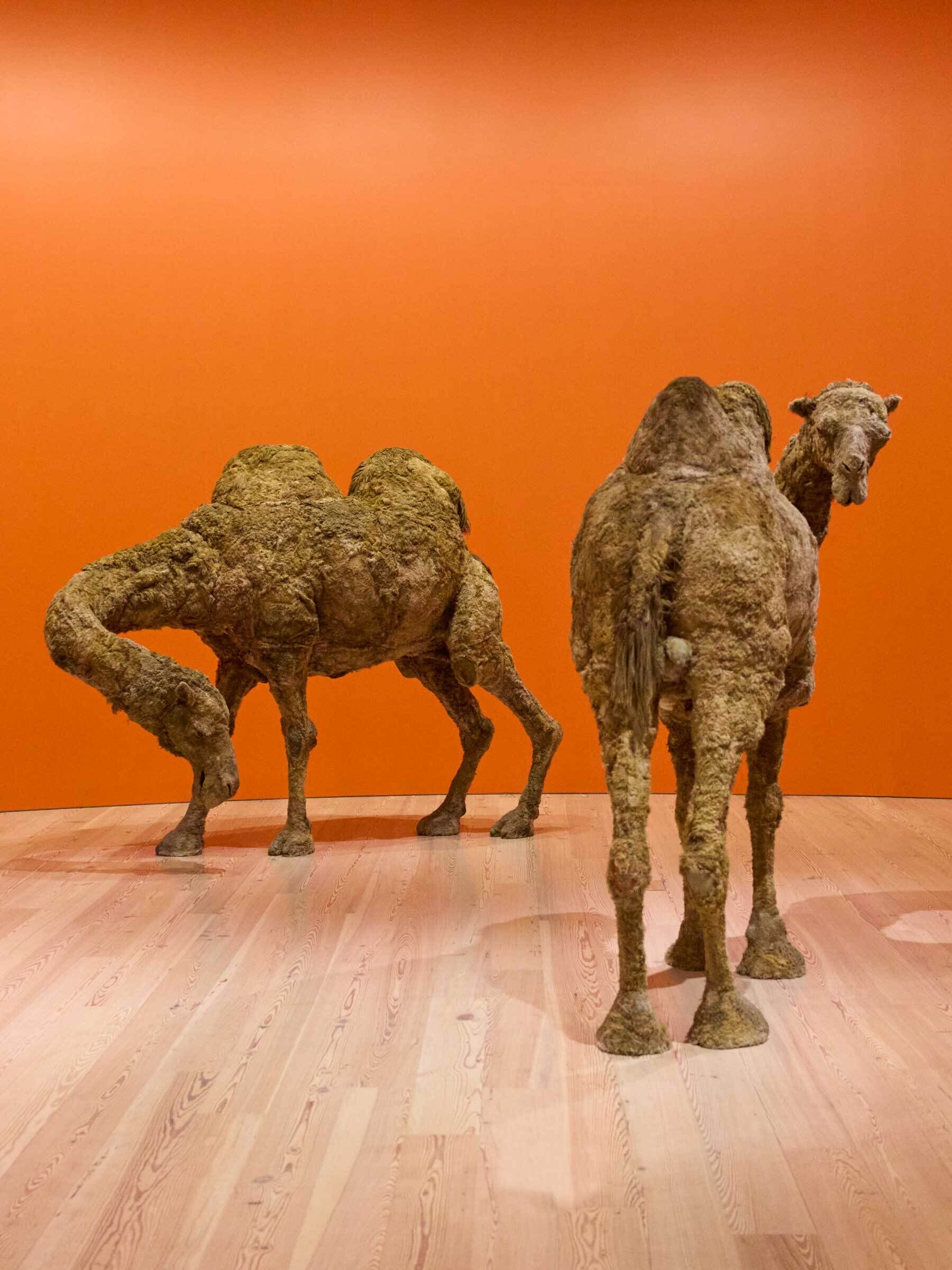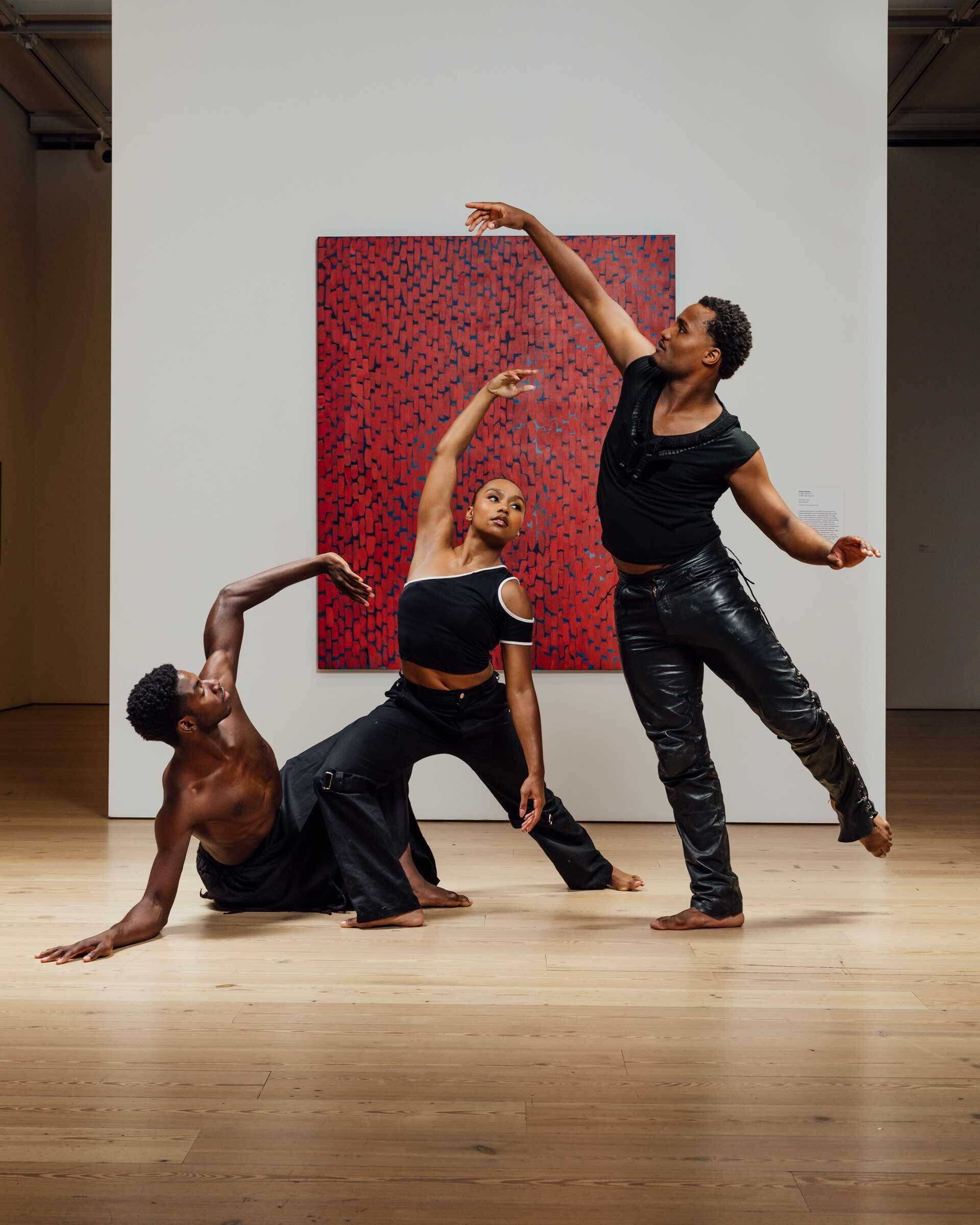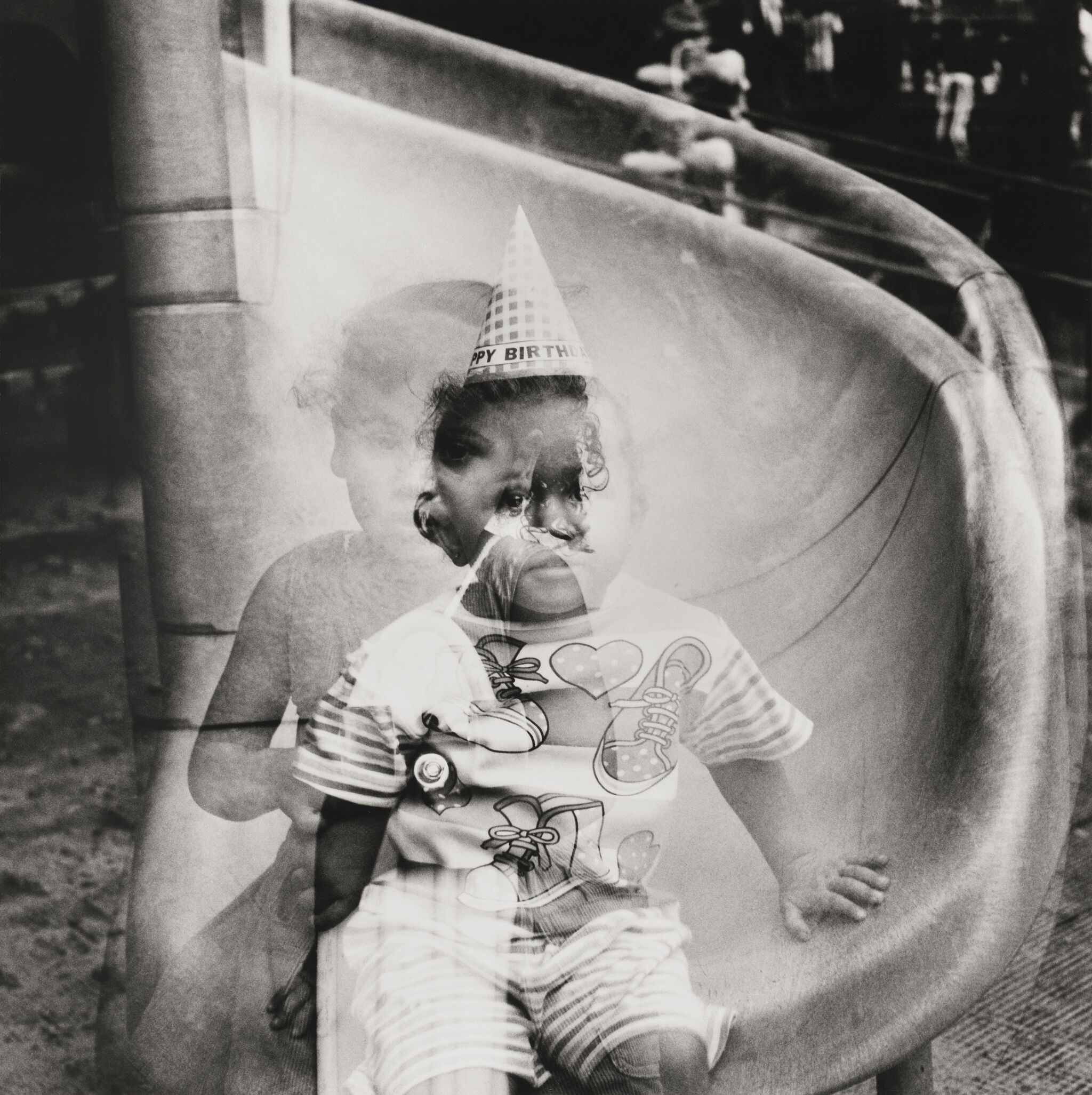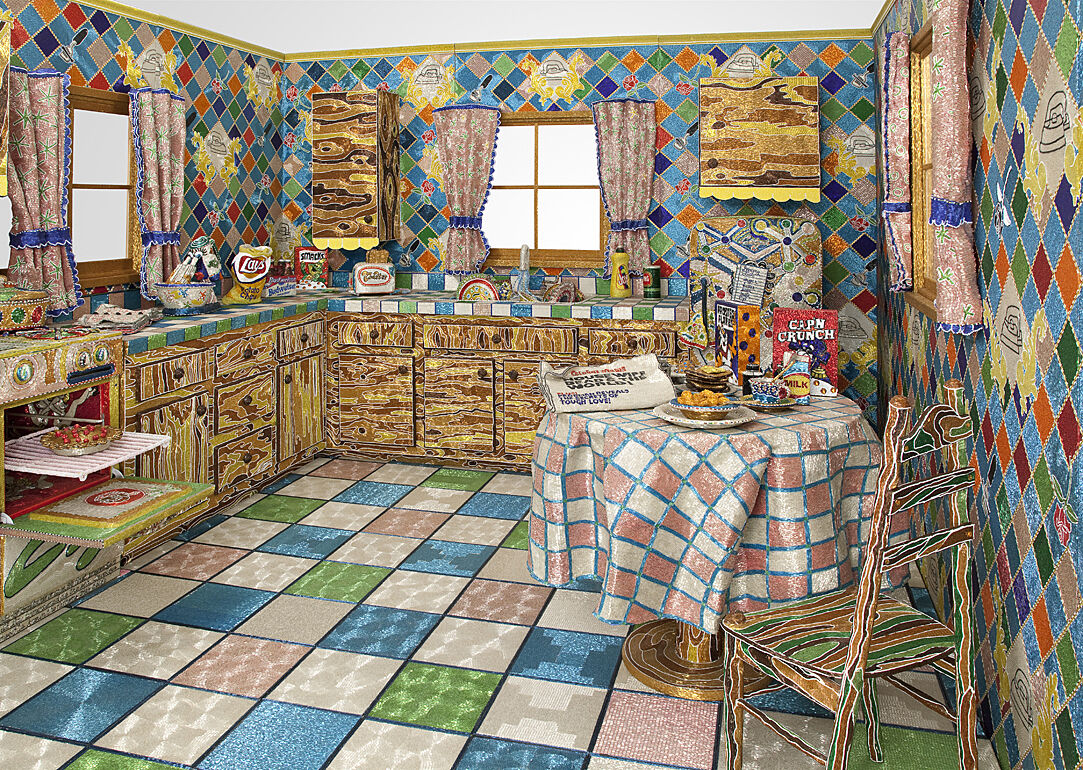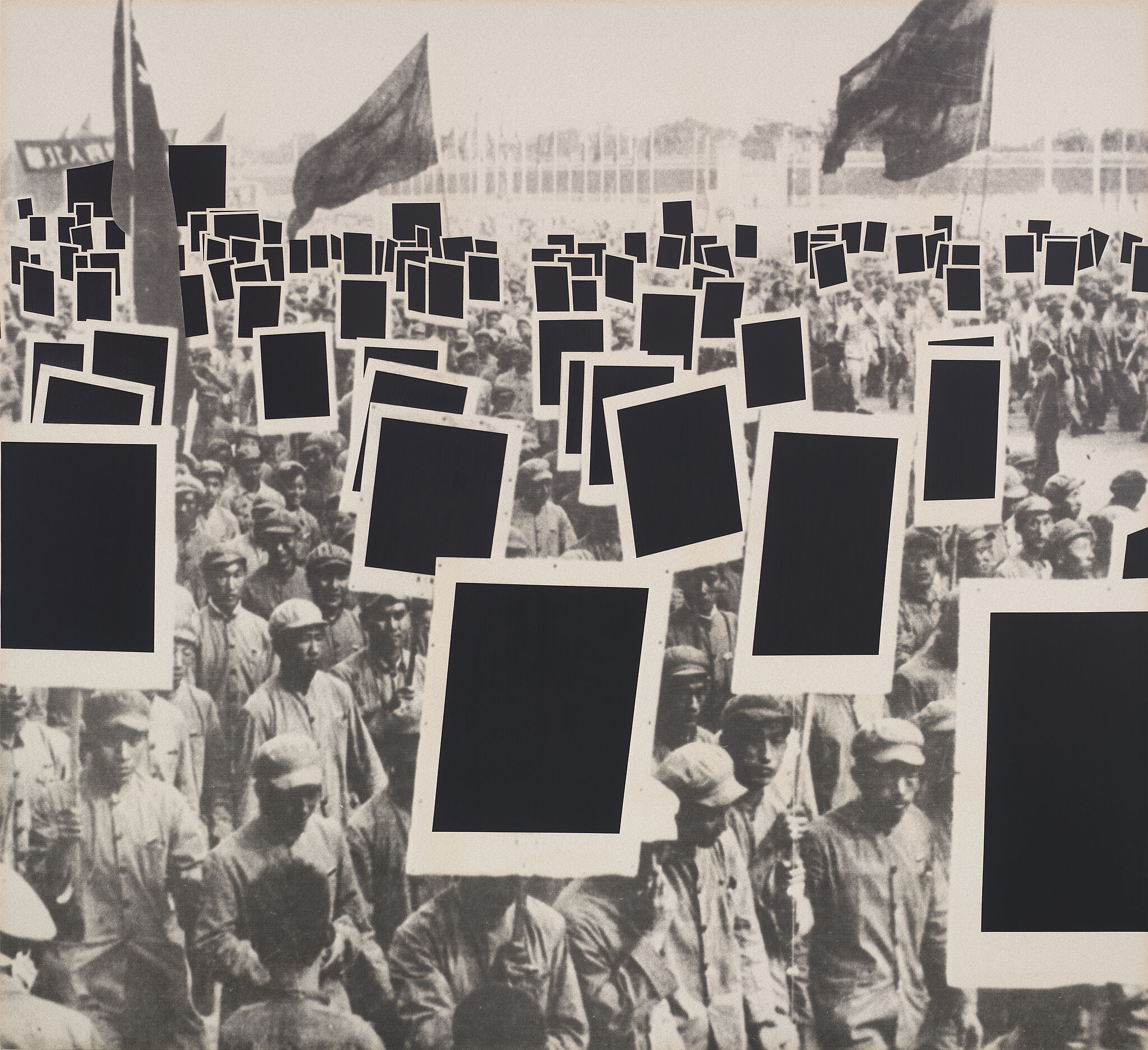Faith Ringgold
1930–2024
Faith Ringgold began her career as an artist and activist in the mid-1960s with large-scale paintings that bluntly addressed racism and sexism in America. In 1972, after seeing an exhibit of Tibetan thangkas hung from dowels, she started painting on unstretched canvases framed in printed fabric. This decisive turn toward the “story quilts” that would epitomize her work in the late 1980s was impelled by her engagement with feminism, her personal history, and her economic circumstances. “Feminist art is soft art, lightweight art, sewing art,” Ringgold has defiantly asserted. Like Judy Chicago and other feminist artists in the 1970s, Ringgold was reclaiming traditions of craft for art.
Women Free Angela is a pivotal piece in Ringgold’s development, linking the racial discourse of her Black Light Series (1969) to the gender-charged paintings of the Feminist Series (1972). Ringgold had begun using text in the earlier works, which embraced the black-is-beautiful movement in unstretched paintings rendered in subtle variations of black. Anticipating the triangular stitching in her quilts, the compositions were sometimes divided into chevron shapes, inspired by patterns in African textiles. The bold message of Women Free Angela (a collage study for a poster), reflects support for the radical academic Angela Davis, who had been arrested and charged in 1970 in connection with a deadly armed takeover of a California courthouse. The triangulated display of black-nationalist colors, with kaleidoscopic reversals of ground and mirror-image text, suggests the interplay and mutual obligations of individual and collective, as well as racial and sexual liberation movements.
Dana Miller and Adam D. Weinberg, Handbook of the Collection (New York: Whitney Museum of American Art, 2015), 325.
Introduction
Faith Ringgold (born Faith Willi Jones; October 8, 1930 – April 13, 2024) was an American painter, author, mixed media sculptor, performance artist, and intersectional activist, perhaps best known for her narrative quilts.
Ringgold was born in Harlem, New York City, and earned her bachelor's and master's degrees from the City College of New York. She was an art teacher in the New York City public school system. As a multimedia artist, her works explored themes of family, race, class, and gender. Her series of story quilts, designed from the 1980s on, captured the experiences of Black Americans and became her signature art form. During her career, she promoted the work of Black artists and rallied against their marginalization by the art museums. She wrote and illustrated over a dozen children's books. Ringgold's art has been exhibited throughout the world and is in the permanent collections of The Guggenheim, the Metropolitan Museum of Art, the Museum of Arts and Design, the Philadelphia Museum of Art, and the Schomburg Center for Research in Black Culture.
Wikidata identifier
Q5431220
Information from Wikipedia, made available under the Creative Commons Attribution-ShareAlike License . Accessed November 22, 2025.
Introduction
Classically trained as a painter and sculptor, she began producing political paintings in the 1960s and '70s and other works later that focused on themes of race, gender, class, family and community. Her work appeared in multiple media, including quilts, and later texts and illustration of books. She was a staunch advocate of bringing the work of Black people and women into the collections of major American museums.
Country of birth
United States
Roles
Artist, author, illustrator, lecturer, painter, sculptor
ULAN identifier
500063866
Names
Faith Ringgold, Faith Willi Jones
Information from the Getty Research Institute's Union List of Artist Names ® (ULAN), made available under the ODC Attribution License. Accessed November 22, 2025.

